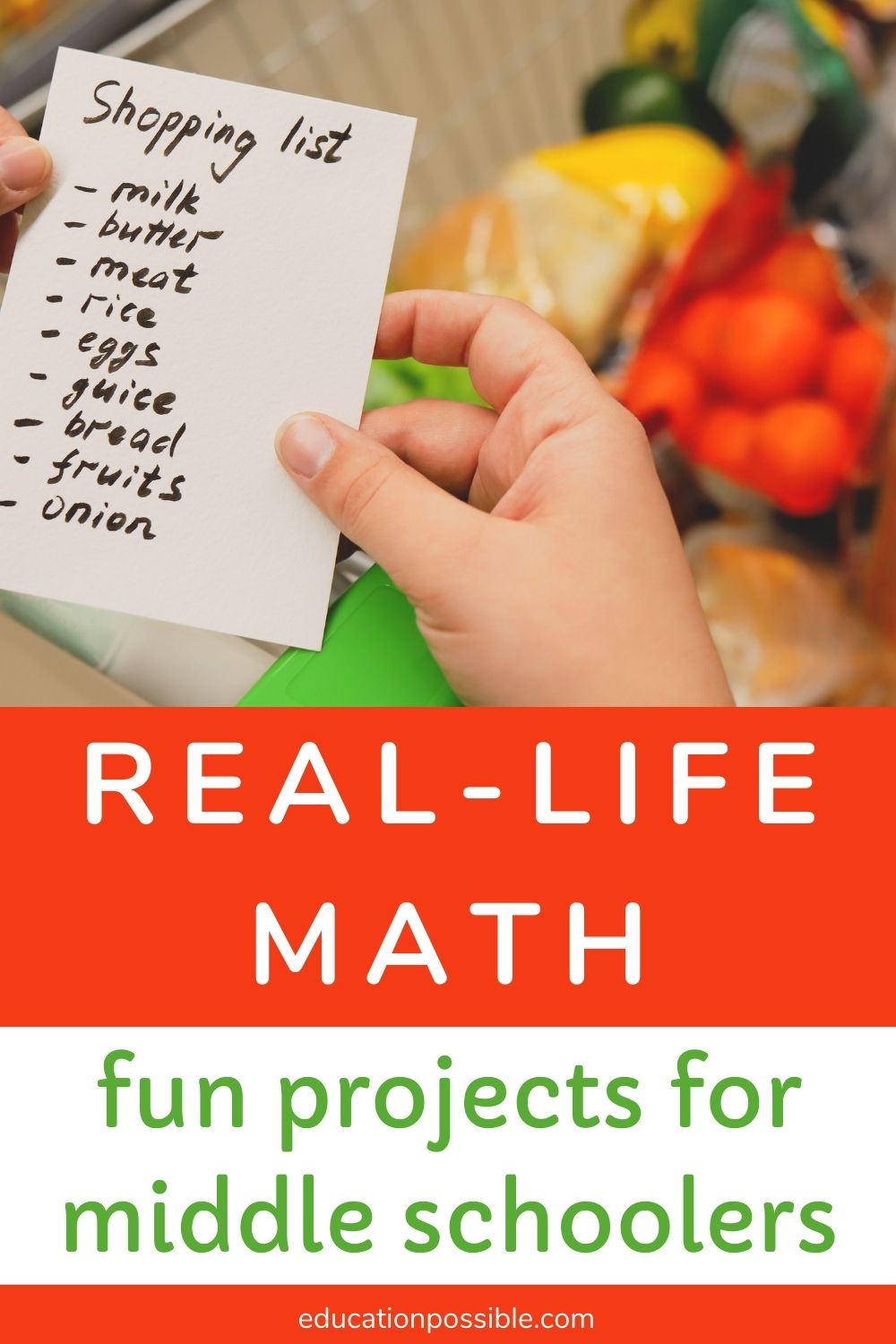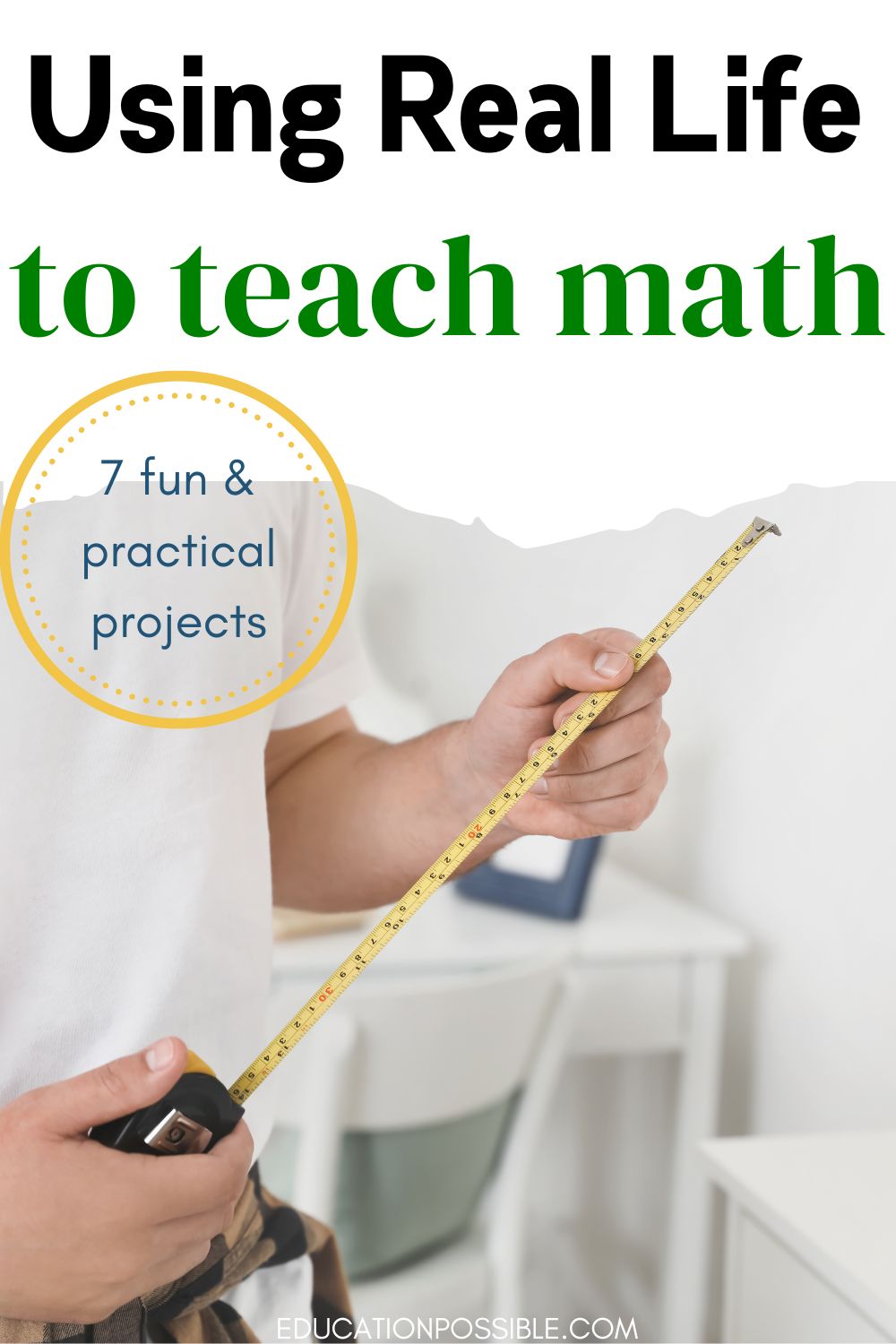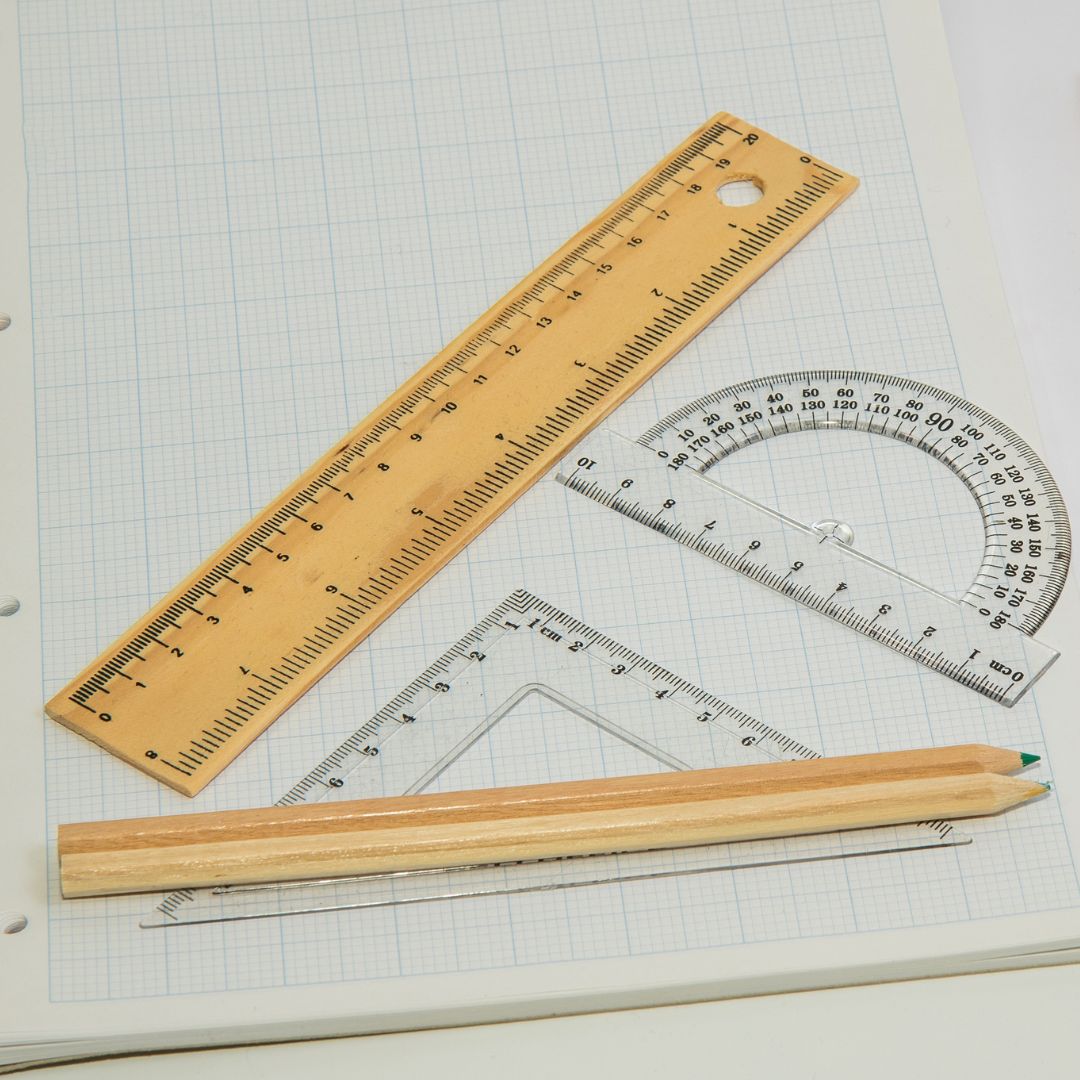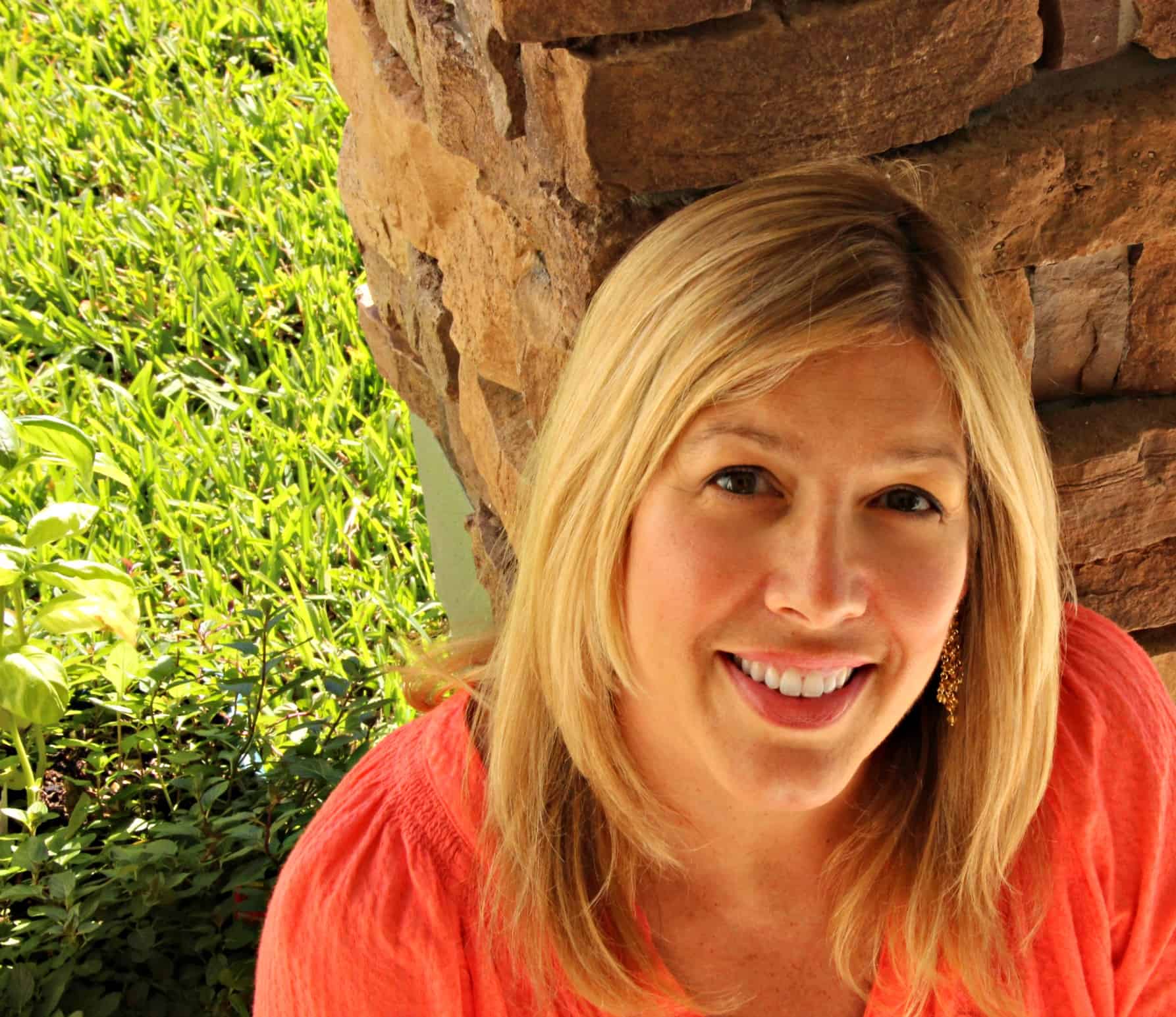Real Life Math Projects for Middle School
One of the best ways to make math engaging is to use real life math projects for middle school. They will make the subject fun and relevant for older kids. Use them as part of your middle school math curriculum.
Tweens and teens don’t always connect how math connects to their actual life. They usually just think about it as a school subject that’s not very interesting.
However, real world math projects will show them the importance of mathematical concepts and their relevance outside of school.

Homeschooling moms often struggle with teaching practical math. But activities like these can help bridge the gap between academic math and real-world applications.
If your math curriculum doesn’t include interactive activities, use some of these to show your middle school students how to use math in everyday life.
Real Life Math Projects for Middle School
Have your tweens ever asked you “What does this have to do with real life?” or “When will I ever use this again?” during their math lessons? To be honest, they’re fair questions.
Of course, they need to learn some math concepts so they can move on to higher grade level math. But, it’s also important for kids to see how they will use math in their daily lives. But how can you make math topics relevant?
The best way is to incorporate activities to your homeschool lesson plans that focus on practical math.
How to Make Math Relevant and Fun
Here are some tips that will show middle schoolers the relevance of math and make it fun.
- Use real-life examples — Kids need to understand that math is everywhere, so give them everyday scenarios. Ask them how they would use a calculator, fractions, or basic geometry in a baking, budgeting, or a shopping project.
- Add a creative element — Make your math projects fun by adding an art or craft component. For example, draw and label shapes with the correct angles, draw pi, or use origami to create 3D geometry shapes.
- Incorporate games — Games are useful for helping kids develop and review essential skills. There are a lot of excellent math board games you can play.
Project-based learning is an excellent way to build student interest and enhance their learning.
This post contains affiliate links.
Mathability: Math in the Real World (Grades 5-8) Real-World Math Problem Solving Grade 6
Real-World Math Problem Solving Grade 6 Hands-On Math Projects With Real-Life Applications
Hands-On Math Projects With Real-Life Applications Real-World Math: Grades 5-8
Real-World Math: Grades 5-8
Benefits of Using Real World Projects for Teaching Math
There are many benefits of using practical activities to teach math. Here are three of the most important ones:
Build Problem-Solving Skills
Your older students will need to think critically to solve everyday problems and scenarios. This will help them in math class and develop their problem solving ability.
Also, they’ll probably have to get creative and use ingenuity to think of a solution. This will help them develop their logical and reasoning skills as well.
Grow Confidence in Math
When middle schoolers understand how much math is used in daily life and they get more comfortable with various scenarios, their confidence in math will soar.
And when students have a positive attitude toward math, they’re more likely to feel confident working through more complex concepts.
Develop Important Life Skills
Tying math to real-life applications will help them expand their math knowledge while also developing important life skills. Think about how much math you use as an adult. Budgeting, shopping, and cooking all involve math.
By teaching your children practical math with fun, interactive projects in middle school, you can set them up for success later on in life.

Life Skills Math Curriculum
As you’ve seen, it’s important to teach tweens practical math and the concepts in your math curriculum.
Luckily, there are plenty of fun math projects you can use in your homeschool that will teach functional math.
Teach Tweens How to Cook
Cooking is an essential life skill, so why not use it to beef up some math knowledge? This is an excellent way for younger teens to practice percentages, ratios, and fractions.
And when your tweens are done with their project, you’ll also have a delicious meal to enjoy.
Shopping and Budgeting
If you want to help older middle schoolers practice budgeting and the concept of spending money wisely, create a shopping project.
Give them a list of items and have them calculate the cost of each item and the total amount. They can also practice comparing products, sales tax and other money-related topics.
Combine the shopping and cooking projects and have tweens planning a week’s meals within a set budget and help prepare them.
Trip Planning
If you have a teen who is not great with distance measurements, have them plan a road trip. They’ll learn how to calculate approximate mileage and time between destinations. They can also use a map to get an idea of the route to take.
Another fun project is planning a family vacation. Let them figure out the budget, considering factors such as fuel cost, meals, and accommodations.

Go Hiking Without a GPS
Hiking can be a fun way to teach angles. One project is to plan out a safe hiking route for your older kids using a compass. If you are hiking right away, you can also add some marks along the trail as reference points.
As you design the route, make an instruction list of the angles it takes.
Your instructions should say things such as “head East at a 45-degree angle until you reach a downed tree or red flag.”
Once you set the course up, give the list of angles to your kids, along with a compass, and see how well they navigate gauging the angles.
Instead of building a trail, you can also head out with your tweens and let them use math (and a compass) to traverse the area.
Statistics
Students can use math to analyze and interpret data from their favorite sports teams. Ask them to look through team statistics, such as wins and losses, batting averages, or points scored in a season.
They can figure out the mean scores of each statistic they researched or create a graph to see trends. This is an excellent way for tweens to learn data analysis and statistics.
Room Makeover
A room makeover can provide a fantastic opportunity for tweens to practice practical math while also giving them a chance to exercise their creativity.
They can start by measuring the room dimensions to understand the area and perimeter they have to work with. When choosing new furniture or decor, they can learn about geometry, scale, proportion, and budgeting.
They’ll use math to calculate whether a piece of furniture can fit in the room, or how much paint they’ll need to cover the walls. And also to choose and hang new drapes or wall hangings.
When they’re finished, they’ll have strengthened their math skills and have a beautiful new room!
Cost of Living Simulation
A great way to show teens how much math is needed in the real world is by teaching them personal finance through a budget simulation.
Give them a set amount of money as a salary and a list of bills they have to pay. Help them use this information to create a budget. They can also research the prices of items and services to compare costs.
Once they’re comfortable with this, you can take it a step further with topics like mortgages, interest rates, and loan percentages. This is a great activity for teaching financial literacy.
With these real-world math projects, they’ll learn valuable lessons while building their math skills.

As you can see, there are plenty of activities you can choose from that focus on practical math applications. And by teaching your tweens real-life math concepts, you’ll be preparing them for success in and out of the classroom.
So, this school year, include more real world math activities in your homeschool.
Additional Resources for Middle School Math
Need another math resource for your lesson plans? Check these out.
What is your favorite real life math project for middle school?





